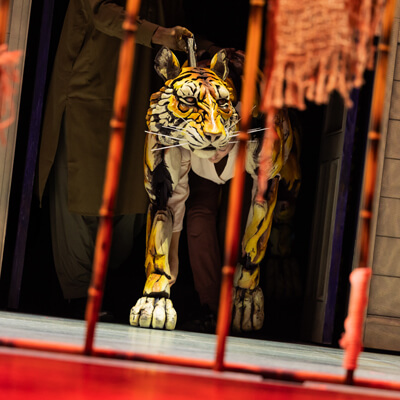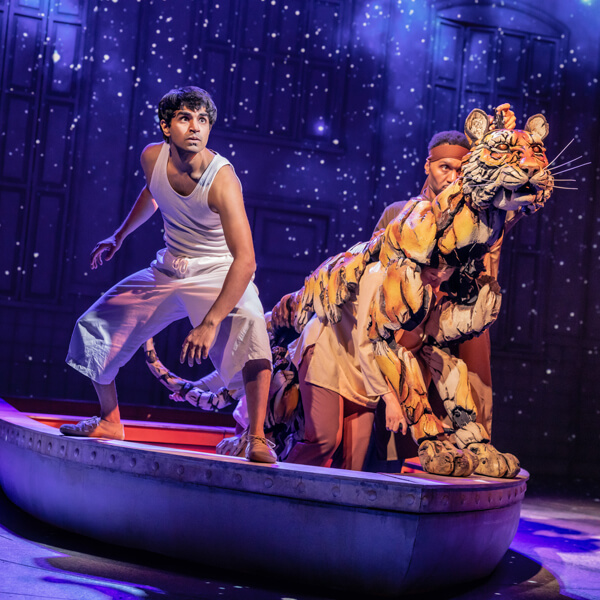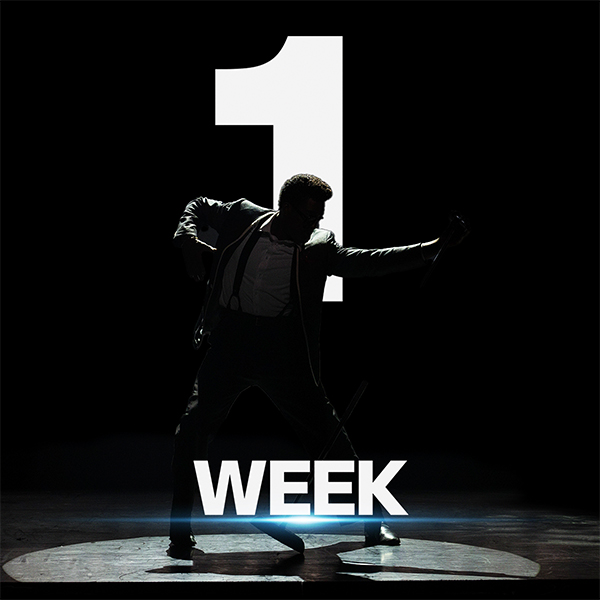
Know the Show: Life of Pi
Dates: September 16-21
Run time: 2 hours, 10 minutes including intermission
Tickets start at less than $20 including fees. General parking is included with your tickets.
Premium parking is $30 and may be added to your tickets at the time of purchase.
Click below or call (816) 363-7827 for tickets.
Themes in Life of Pi may be unsuitable for young children. Please review the content considerations and use discretion.
The Story

Life of Pi by Yann Martel tells the story of Pi, a young Indian boy who survives a shipwreck. The story introduces Pi’s childhood in Pondicherry, India, where his family owns a zoo and we learn Pi is a curious young boy who is interested in Hinduism, Christianity, and Islam.
When Pi is a teenager, his family moves to Canada, taking their animals on a Japanese cargo ship. The ship encounters a storm and sinks, leaving Pi alone on a lifeboat with a Bengal tiger named Richard Parker, a zebra, a hyena, and an orangutan.
Pi faces extreme challenges as he fights for survival, dealing with hunger, thirst, and the dangerous animals on the lifeboat. He uses his knowledge of zoology and his faith to endure. Over time, he forms a fragile bond with Richard Parker, realizing they need each other to survive.
After 227 days adrift, Pi and Richard Parker reach Mexico. Richard Parker disappears into the jungle, and Pi is rescued. When officials question him about his journey, they find his story hard to believe.
Music
Although Life of Pi is not a musical, the show is very lyrical. The score by Andrew T. Mackay blends orchestral elements with Indian-inspired sounds, reflecting the story’s setting in Pondicherry, India, and its themes of survival and spirituality. The music is integral to the storytelling, enhancing the visual and emotional impact of the play.
Music is used to underscore key moments in the narrative, from the vibrant atmosphere of the Pondicherry Zoo to the perilous journey at sea.
Puppetry

Life of Pi utilizes intricate puppetry to bring the story’s animals to life, particularly the Bengal tiger, Richard Parker. These aren’t simple puppets; they are designed to be lifelike, with visible imperfections and driftwood-like appearances, reflecting the shipwreck setting.
The puppeteers, often three per animal, work in intricate coordination to imbue the puppets with emotion, physicality, and even a sense of danger, creating a truly immersive theatrical experience.
Operating the larger puppets, like Richard Parker, requires a team of puppeteers who must be in sync to convey the animal’s movements, emotions, and even breath.
The puppeteers create sounds live, such as roars and growls, and use physical cues like breathing and nudges to communicate with each other and bring the puppets to life.



